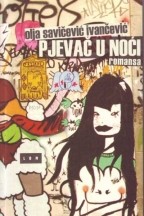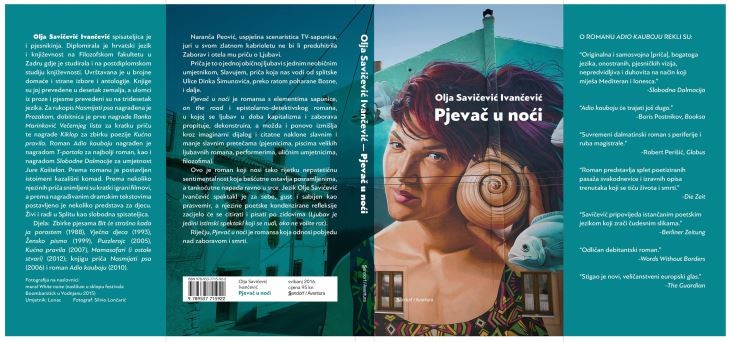
Dissemination
Singer in the night - Methodology
Written by Super UserTitle of Activity
GRAFFITI, GRAFFITI
Description of educational activity
Duration: 90 minutes
Students' age: 16-18
Class organization: group work and pair work outside the classroom (school lobby, open living room, staircase, park by the school etc.) and 2nd clesson in the classroom, work in pairs, groups 5 x 4, individual work.
Objective: To become creatively acquanted with a literary work by linking it with the history of art, social criticism, modern expression and forms (new language, graffiti, strip, conceptualism, rap, heppening, performance etc.). The aim is to improve students' reading literacy and text comprehension skill , ability to reflect, critical thinking and empathy, key competencies, and transversal skills. Designing your own piece of work of creating graffiti and video shooting and self-study. The aim is to cultivate the reading culture by creating a reading motivating environment, developing the ability to interpret, analyze and evaluate.
Educational activities:
1. Pupils in an out-of-classroom space, freely arranged, without notice of the book and theme, individually read a template composed of thoughts / phrases (separated from the work that will be the subject of author's interviews) and choose one as their future graphitti.
2. After reading brief written instructions on the basics of the creative process, the students draw / print the selected sentence / idiom in a graphittti on larger papers. They can write the chosen text as a message in various creative and original ways and fonts. They will cover the school in unexpected places (corridors, schoolboards, toilets, mirrors, staffroom doors, coffee machines, windows...)
3. They document their work by recording with a cell phone, in pairs, at different places in the school, in short, half-length videos - while one shoots, the other speaks out the selected text (in a proclamative, subversive manner) and carries it to the chosen place and then they change roles.
4. Second lesson. In the master classroom, the facilitator introduces the cover of the book with the illustration (mural), the author herself and title of the novel, and reads the selected excerpt in an inzerpretative way. Students should observe and orally comment on the variety of prose forms in the excerpt and conclude what the main topic (street, subversive art in history and today) is.
5. Five groups of four students receive 4 lists of names and names (4) from the excerpt and they seek information on the Internet (1 pupil - 1 term). They report with the projection of links in the shortest lines about those (2-3) that are interesting to them.
6. A shorter discussion follows with a critical review in a fragment on modern poetry (two sentences) that, having fun, "ceased to think about the world" and became an "empty language" about modern art (conceptualism: happening, performance, video art, street art ) and about the range of the general culture needed to understand art. The discussion will be conducted and maintained to encourage students to ask questions themselves. During the discussion, marking the motive and linguistic turn at the end of the fragment (eros, male-female friendship, youth passion, refugees, Bosnia) - the reality that looks for its new poets and new voices.
7. Projection of students' documentary videoclips - drawing graphitti drawings on the school premises.
8. Reflection of the job done, self-evaluation and evaluation.
Work materials: worksheets (with selected thoughts and phrases), brief instructions on creating the graffiti, thicker A3 papers, color stamps, cell phones (video and internet), cover pages, cover pages, novel, computer, projector.
A fragment from the novel "Singer in the Night" (page 29)
"If I had to describe the Slavu as short as possible, I would say that he is a street poet." - "... it passes as if it were not, I'm sorry, everybody to my side forever and without problems."
Motivation:
Out-of-class teaching, simulation of graphite with novel statements and their setting up by school space and documentation of videotapes
Evaluation and Assessment Method:
Students independently demonstrate and fully substantiate their attitudes and results in the course of their work.
The impact of RSP reading activities: practices that support and encourage student choice, thinking and attitude. The idea and the choice are personal and there is no mistake, and the positive understanding of thinking and thinking affects the students' confidence and lose previous reading resistance and gradually gain readership competence.
Connection to curriculum
Grade: 2nd - 4th year of high school
General grammar school program: The aim of the curriculum of the study of Literature, Visual Arts and Music and the Area of History, Citizenship and Ethics is related to the reading and understanding of more contemporary, engaged literary and related works, literature and works of contemporary music and visual arts.
Students should independently discern, differentiate, explain, demonstrate and reflect on the features of the text offered, and arguably outline their views on the influence of culture, art and society on the development of young people's personality.
Knowledge:
- Autonomously access text from different perspectives
- Learn to initiate a discussion and ask questions
- Develop ease and readiness of reading
- Enhance the understanding of reading comprehension
- Organize and suspend different types of information
Skills:
- Observe, counteract, distinguish, and comment on the similarities and differences that appear in the text.
- Develop the prediction skill and the ability to imagine possible situational solutions.
- Develop and enrich communication skills.
- Construct, conclude and evaluate.
- Learn to work effectively, independently and equally in the group.
Competences:
- Establish links between the world in the text and real life or personal experiences.
- Be able to visualize, combine, intervene in the material.
- Follow the instructions and tasks and be able to evaluate the results.
- Evaluate evidence and arguments, support and justify choices.
Bibliographic reference to be used during the activity
OLJA SAVIČEVIĆ IVANČEVIĆ
Singer in the night
Publishing house: Sandorf
05/2016.
No. of pages: 152
ISBN 9789537715922



Digital sources
- http://www.hrvatskodrustvopisaca.hr/hr/clan/olja-savicevic-ivancevic-189
- http://booksa.hr/kolumne/kritike/ljubav-protiv-besmisla
- http://www.slobodnadalmacija.hr/scena/kultura/clanak/id/314156/ljubav-i-ostale-parodije--pjevac-u-noci-olje-savicevic-ivancevic
- http://www.mvinfo.hr/knjiga/11187/pjevac-u-noci
- https://www.voxfeminae.net/cunterview/kultura/item/9931-olja-savicevic-ivancevic-moj-novi-roman-pjevac-u-noci-je-pseudoljubic-pisan-visokim-stilom
- http://www.mvinfo.hr/clanak/olja-savicevic-ivancevic-pjevac-u-noci-ulomak
- http://www.portalnovosti.com/knjievna-kritika-pitko-i-duboko
- http://www.matica.hr/vijenac/582/kako-ispricati-ljubavnu-pricu-25787/
- http://m.tportal.hr/254936/Domacim-piscima-je-pisanje-sporedni-posao.html
- http://elektronickeknjige.com/knjiga/savicevic-ivancevic-olja/n asmijati-psa/nasmijati-psa /
- http://www.hrvatskodrustvopisaca.hr/hr/dogadanje/olji-savicevic-ivancevic-nagrada-t-portala-526
- http://www.ziher.hr/recenzija-pjevac-u-noci-olja/
- http://citajme.com/pjevac-u-noci/
- http://www.delfi.rs/knjige/111045_pjevac_u_noci_knjiga_delfi_knjizare.html
- http://www.mvinfo.hr/clanak/adios-cowboy-objavljeno-i-americko-izdanje-romana-adio-kauboju-olje-savicevic-ivancevic
- http://www.worldcat.org/title/farewell/oclc/968507273?ht=edition&referer=di
Results
The expected outcomes of the lesson:
- students acquire the lifelong ability to read, interpret and evaluate the literary text;
- the ability to develop an understanding of literal and implicit meaning, relevant contexts, and deeper issues and attitudes expressed in literary works;
- a competent personal response to the subject of the literary work they have studied;
- solving different tasks from different perspectives;
- the research of broader and universal questions suggested through the literary work;
- a conscious grasp of contemporary artistic and social themes;
- developed empathy and a better understanding of themselves and the world around them.
Recommendations
Choosing a method of teaching and a suitable text affects the student's interest in reading, studying, and interpreting.
Contact
X gimnazija ''Ivan Supek''
Ul. Vjekoslava Klaića 7
10000
Zagreb
E-mail: partners@handbook4rspreaders.org











